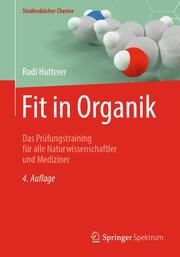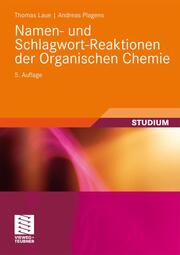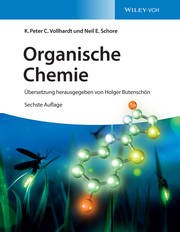Chemical Ligation
eBook - Tools for Biomolecule Synthesis and Modification
Bibliographische Informationen
Format: EPUB
Digitale Rechteverwaltung: Adobe DRM
Beschreibung
Autorenportrait
Luca D. D'Andrea, PhD, is Research Scientist at the Institute of Biostructures and Bioimaging, CNR Naples, Italy. His scientific interests are in the field of peptide and protein chemistry. His research activity focuses on design, synthesis, and structural characterization of peptide/proteins as therapeutic/diagnostic agents.
Alessandra Romanelli, PhD, is assistant professor of General Chemistry at Department of Pharmacy, University of Naples "Federico II", Italy. She actively works in the field of peptides and peptide-based molecules (such as peptide nucleic acids) as tools for chemical biology.
Inhalt
List of Figures xiii
List of Plates xxiii
List of Contributors xxix
Preface xxxiii
1 Introduction to Chemical Ligation Reactions 1Lucia De Rosa, Alessandra Romanelli, and Luca Domenico DAndrea
1.1 Introduction 1
1.2 Chemical Ligation Chemistries 6
1.3 Imine Ligations 7
1.4 Serine/Threonine Ligation (STL) 21
1.5 Thioether Ligation 24
1.6 Thioester Ligation 25
1.7 ?Ketoacid?Hydroxylamine (KAHA) Ligation 49
1.8 Staudinger Ligation 52
1.9 AzideAlkyne Cycloaddition 57
1.10 DielsAlder Ligation 61
References 64
2 Protein Chemical Synthesis by SEA Ligation 89Oleg Melnyk, Claire Simonneau, and Jérôme Vicogne
2.1 Introduction 89
2.2 Essential Chemical Properties of SEA Group 93
2.3 Protein Total Synthesis Using SEA Chemistry SEAon/off Concept 97
2.4 Chemical Synthesis of HGF/SF Subdomains for Deciphering the Functioning of HGF/SF-MET System 106
2.5 Conclusion 114
References 114
3 Development of Serine/Threonine Ligation and Its Applications 125Tianlu Li and Xuechen Li
3.1 Introduction 125
3.2 Serine/Threonine Ligation (STL) 130
3.3 Application of STL in Protein Synthesis 140
3.4 Conclusion and Outlook 154
References 154
4 Synthesis of Proteins by Native Chemical LigationDesulfurization Strategies 161Bhavesh Premdjee and Richard J. Payne
4.1 Introduction 161
4.2 LigationDesulfurization and Early Applications 162
4.3 Beyond Native Chemical Ligation at Cysteine The Development of Thiolated Amino Acids and Their Application in Protein Synthesis 174
4.4 LigationDeselenization in the Chemical Synthesis of Proteins 211
4.5 Conclusions and Future Directions 216
References 218
5 Synthesis of Chemokines by Chemical Ligation 223Nydia Panitz and Annette G. Beck?Sickinger
5.1 Introduction The ChemokineChemokine Receptor Multifunctional System 223
5.2 Synthesis of Chemokines by Native Chemical Ligation 224
5.3 Synthesis of Chemokines by Alternative Chemical Ligation 231
5.4 Semisynthesis of Chemokines by Expressed Protein Ligation 233
5.5 Prospects 241
References 243
6 Chemical Synthesis of Glycoproteins by the Thioester Method 251Hironobu Hojo
6.1 Introduction 251
6.2 Ligation Methods and Strategy of Glycoprotein Synthesis 252
6.3 The Synthesis of the Extracellular Ig Domain of Emmprin 254
6.4 Synthesis of Basal Structure of MUC2 256
6.5 N?Alkylcysteine?Assisted Thioesterification Method and Dendrimer Synthesis 257
6.6 Synthesis of TIM?3 260
6.7 Resynthesis of Emmprin Ig Domain 262
6.8 Conclusion 264
References 264
7 Membrane Proteins: Chemical Synthesis and Ligation 269Marc Dittman and Martin Engelhard
7.1 Introduction 269
7.2 Methods for the Synthesis and Purification of Membrane Proteins 270
7.3 Ligation and Refolding 273
7.4 Illustrative Examples 276
References 280
8 Chemoselective Modification of Proteins 285Xi Chen, Stephanie Voss, and Yao-Wen Wu
8.1 Chemical Protein Synthesis 285
8.2 Chemoselective and Bioorthogonal Reactions 287
8.3 Site-Selective Protein Modification Approaches 307
References 322
9 Stable, Versatile Conjugation Chemistries for Modifying Aldehyde-Containing Biomolecules 339Aaron E. Albers, Penelope M. Drake and David Rabuka
9.1 Introduction 339
9.2 Aldehyde as a Bioorthogonal Chemical Handle for Conjugation 339
9.3 Aldehyde Conjugation Chemistries 340
9.4 The PictetSpengler Ligation 341
9.5 The Hydrazinyl-Iso-PictetSpengler (HIPS) Ligation 341
9.6 The Trapped-Knoevenagel (thioPz) Ligation 343
9.7 Applications AntibodyDrug Conjugates 346
9.8 Next-Generation HIPS Chemistry AzaHIPS 348
9.9 Applications Protein Engineering 349
9.10 Applications Protein Labeling 349
9.11 Conclusions 351
References 351
10 Thioamide Labeling of Proteins through a Combination of Semisynthetic Methods 355Christopher R. Walters, John J. Ferrie, and E. James Petersson
10.1 Introduction 355
10.2 Thioamide Synthesis 356
10.3 Thioamide Incorporation into Peptides 357
10.4 Synthesis of Full?Sized Proteins Containing Thioamides 360
10.5 Applications 368
10.6 Conclusions 381
Acknowledgments 381
References 382
11 Macrocyclic Organo-Peptide Hybrids by Intein-Mediated Ligation: Synthesis and Applications 391John R. Frost and Rudi Fasan
11.1 Introduction 391
11.2 Macrocyclic Organo-Peptide Hybrids as Natural-Product-Inspired Macrocycles 396
11.3 Application of MOrPHs for Targeting -Helix-Mediated ProteinProtein Interactions 406
11.4 Conclusions 410
References 410
12 Protein Ligation by HINT Domains 421Hideo Iwaï and A. Sesilja Aranko
12.1 Introduction 421
12.2 Protein Ligation by Protein Splicing 423
12.3 Naturally Occurring and Artificially Split Inteins for Protein Ligation 424
12.4 Conditional Protein Splicing 427
12.5 Inter- and Intramolecular Protein Splicing 429
12.6 Protein Ligation by Other HINT Domains 430
12.7 Bottleneck of Protein Ligation by PTS 432
12.8 Comparison with Other Enzymatic Ligation Methods 432
12.9 Perspective of Protein Ligation by HINT Domains 437
12.10 Conclusions and Future Perspectives 438
Acknowledgment 438
References 438
13 Chemical Ligation for Molecular Imaging 447Aurélien Godinat, Hacer Karatas, Ghyslain Budin, and Elena A. Dubikovskaya
13.1 Introduction 447
13.2 Chemical Ligation 448
13.3 Conclusion 470
References 473
14 Native Chemical Ligation in Structural Biology 485Lucia De Rosa, Alessandra Romanelli, and Luca Domenico DAndrea
14.1 Introduction 485
14.2 Protein (Semi)synthesis for Molecular Structure Determination 486
14.3 Protein (Semi)Synthesis for Understanding Protein Folding, Stability, and Interactions 494
14.4 Protein (Semi)Synthesis in Enzyme Chemistry 501 References 506
Index 517
E-Book Informationen
Alle hier erworbenen E-Books können Sie in Ihrem Kundenkonto in die kostenlose PocketBook Cloud laden. Dadurch haben Sie den Vorteil, dass Sie von Ihrem PocketBook E-Reader, Ihrem Smartphone, Tablet und PC jederzeit auf Ihre gekauften und bereits vorhandenen E-Books Zugriff haben.
Um die PocketBook Cloud zu aktivieren, loggen Sie sich bitte in Ihrem Kundenkonto ein und gehen dort in den Bereich „Downloads“. Setzen Sie hier einen Haken bei „Neue E-Book-Käufe automatisch zu meiner Cloud hinzufügen.“. Dadurch wird ein PocketBook Cloud Konto für Sie angelegt. Die Zugangsdaten sind dabei dieselben wie in diesem Webshop.
Weitere Informationen zur PocketBook Cloud finden Sie unter www.meinpocketbook.de.
Allgemeine E-Book-Informationen
E-Books in diesem Webshop können in den Dateiformaten EPUB und PDF vorliegen und können ggf. mit einem Kopierschutz versehen sein. Sie finden die entsprechenden Informationen in der Detailansicht des jeweiligen Titels.
E-Books ohne Kopierschutz oder mit einem digitalen Wasserzeichen können Sie problemlos auf Ihr Gerät übertragen. Sie müssen lediglich die Kompatibilität mit Ihrem Gerät prüfen.
Um E-Books, die mit Adobe DRM geschützt sind, auf Ihr Lesegerät zu übertragen, benötigen Sie zusätzlich eine Adobe ID und die kostenlose Software Adobe® Digital Editions, wo Sie Ihre Adobe ID hinterlegen müssen. Beim Herunterladen eines mit Adobe DRM geschützten E-Books erhalten Sie zunächst eine .acsm-Datei, die Sie in Adobe® Digital Editions öffnen müssen. Durch diesen Prozess wird das E-Book mit Ihrer Adobe-ID verknüpft und in Adobe® Digital Editions geöffnet.
Weitere Artikel aus der Kategorie "Chemie/Organische Chemie"
Lieferbar innerhalb 24 Stunden

Lieferbar innerhalb 1 - 2 Wochen

Lieferbar innerhalb 1 - 2 Wochen

Lieferbar innerhalb 1 - 2 Wochen

Lieferbar innerhalb 24 Stunden

Lieferbar innerhalb 1 - 2 Wochen








